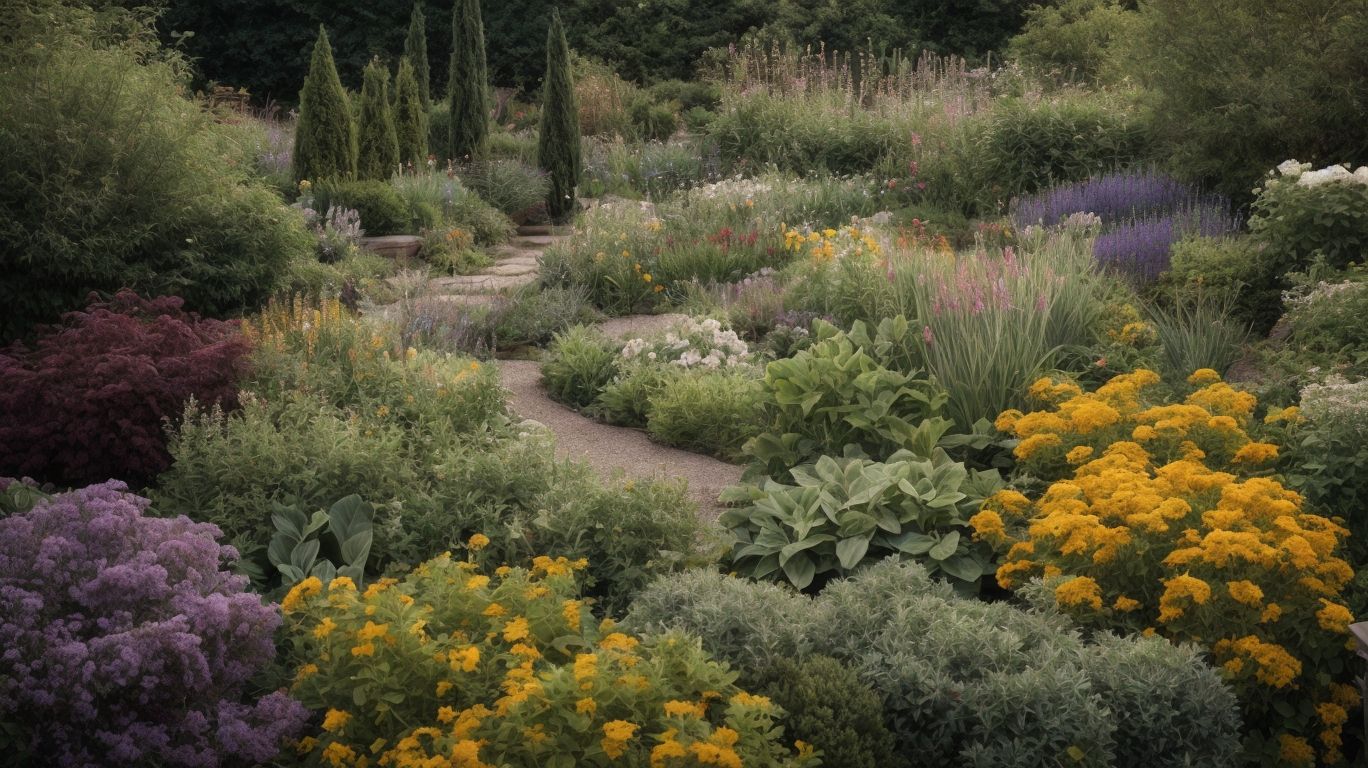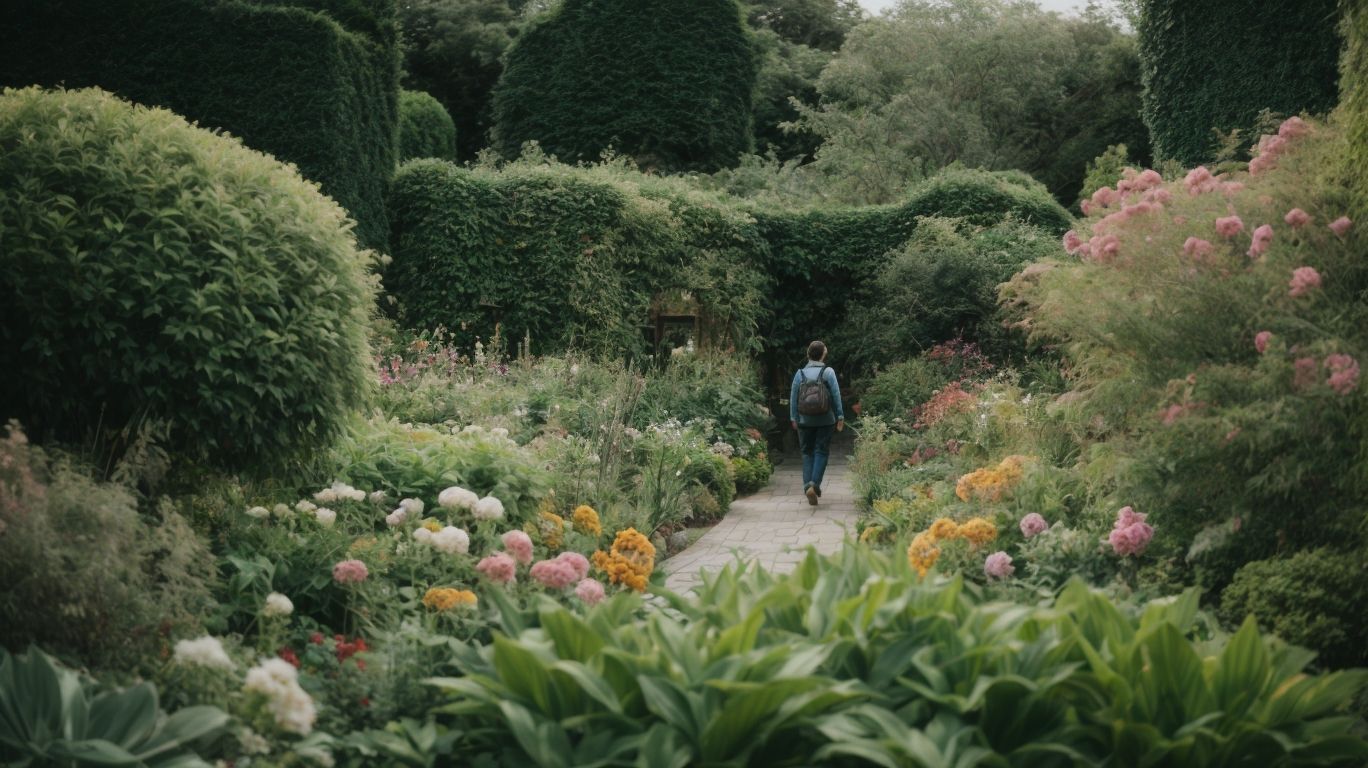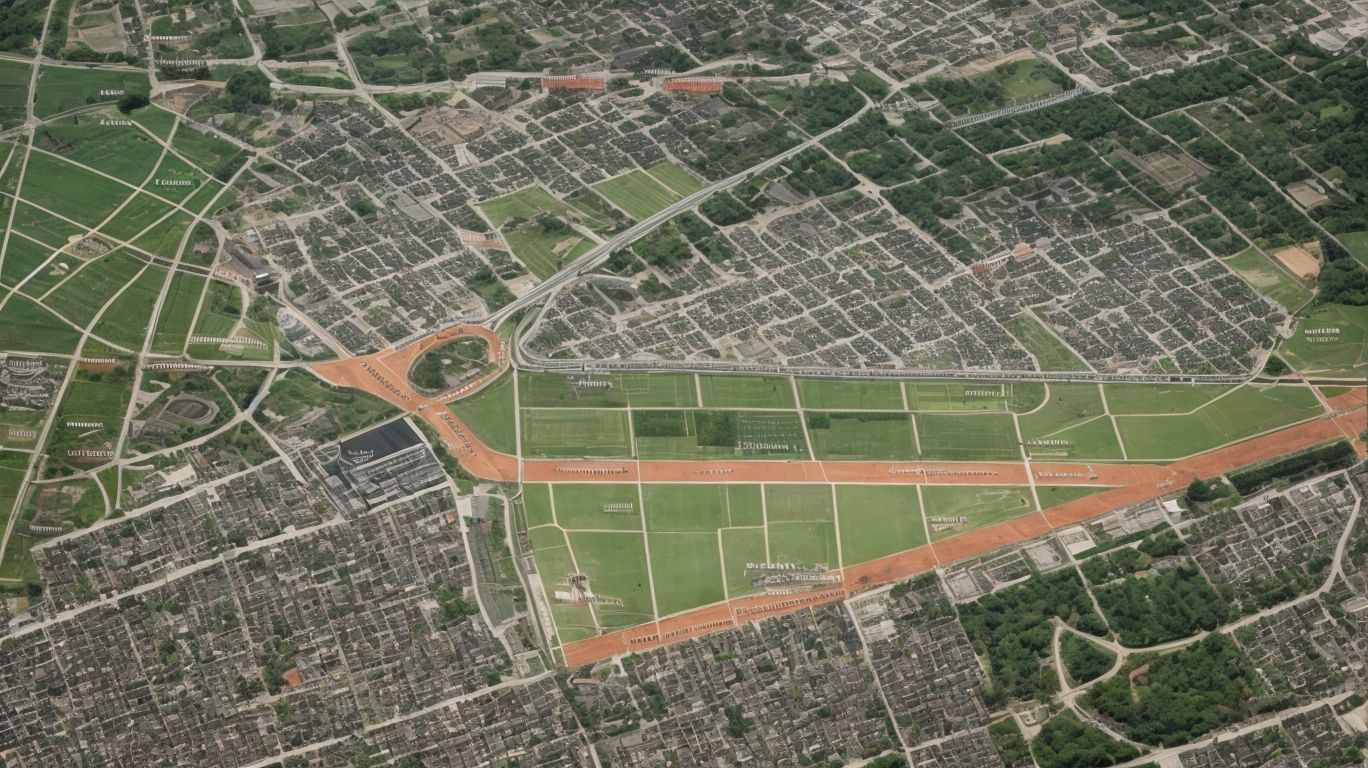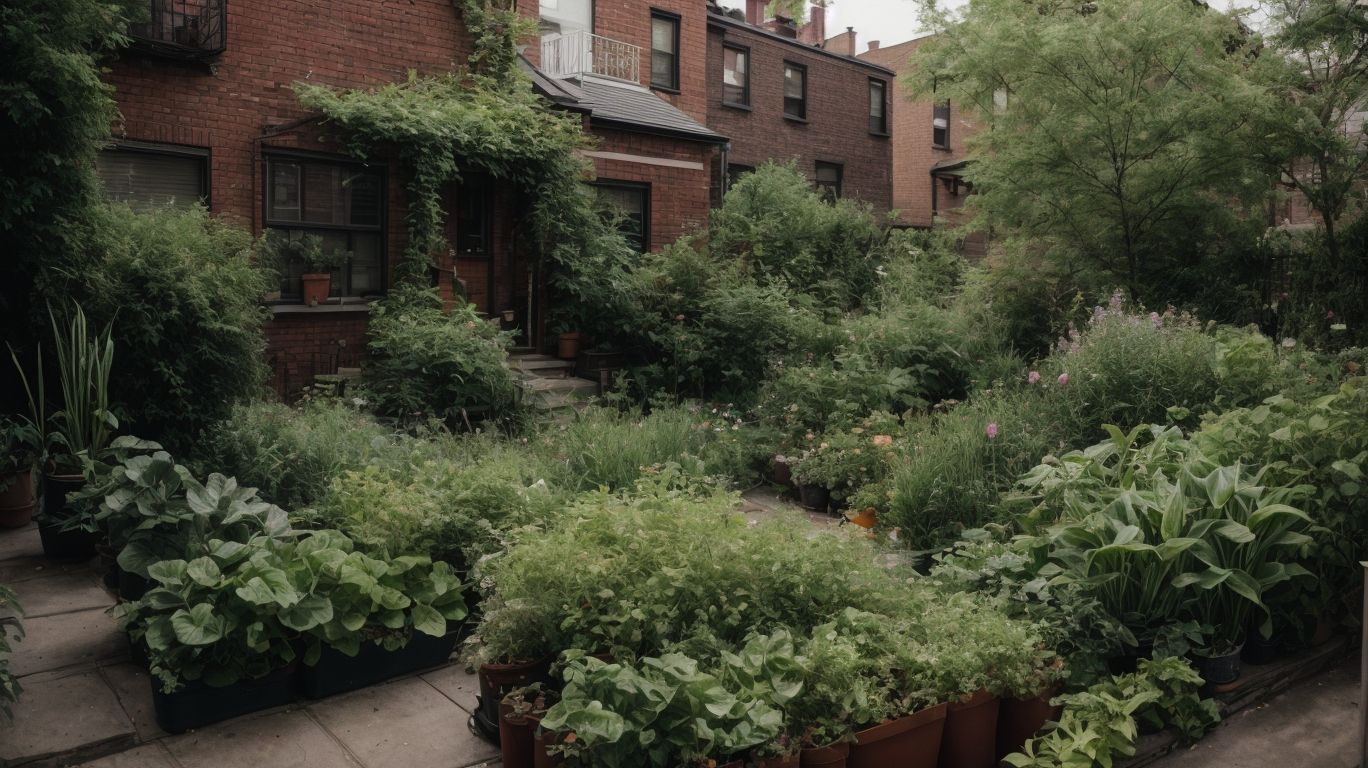Welcome to our essential guide on the gardening zone of 63146! Whether you’re a seasoned gardener or just beginning to explore the joys of gardening, understanding the specific gardening zone of your area is crucial for successful and thriving plant growth.
In this comprehensive article, we will delve into the concept of gardening zones, uncover the unique characteristics of zone 63146, and explore the factors that influence gardening in this region. From climate and soil type to sun exposure and plant hardiness, we’ll examine the key elements that shape the gardening landscape in this zone.
We’ll provide valuable insights into the best plants to grow in zone 63146, including:
- Annuals
- Perennials
- Trees and shrubs
- Vegetables
- Herbs
- Fruits
To help you make the most of your gardening endeavors, we’ll also share practical tips for gardening in this zone, covering essential aspects such as:
- Soil preparation
- Plant selection
- Proper watering techniques
- Protection from extreme temperatures
- Regular maintenance
Whether you’re looking to enhance your existing garden or start a new one, this guide is your go-to resource for unlocking the full potential of gardening in zone 63146. So, let’s embark on this enlightening journey and discover the secrets to successful gardening in your region!
Key Takeaways:
What is a Gardening Zone?

Credits: Monkinthegarden.Com – Adam Rivera
The gardening zone, as defined by the USDA Plant Hardiness Zone Map, serves as a crucial tool for gardeners, providing valuable data on the climate and temperature ranges suitable for various plants.
By categorizing geographical regions into different zones based on average annual minimum winter temperatures, the USDA Plant Hardiness Zone Map aids gardeners in making informed decisions about which plants are most likely to thrive in their specific area. This assists in selecting plants that can endure the prevalent environmental conditions, safeguarding against potential losses due to unsuitable climate.
The USDA Plant Hardiness Zone Map is not only beneficial for individual gardeners but also serves as a valuable resource for agricultural research and planning. It helps experts and professionals in the agricultural industry to evaluate the adaptability and suitability of various crops and plant species for specific regions, leading to more effective agricultural practices and increased productivity.
What is the Gardening Zone of 63146?

Credits: Monkinthegarden.Com – Billy Clark
The gardening zone of 63146, as identified by the USDA Plant Hardiness Zone Map 2023, delineates the specific climate and temperature characteristics of this geographical area, offering insights into the suitability of plants for cultivation.
What are the Factors that Affect Gardening in Zone 63146?

Credits: Monkinthegarden.Com – Richard Baker
Several factors influence gardening in Zone 63146, including the local climate, native plant species, wildlife presence, and the impact of climate change, as evidenced by data from Alaska weather stations and USDA research.
Zone 63146 experiences a range of climatic conditions, with hot, humid summers and cold winters, which requires a diverse approach to gardening. The presence of unique native plant species, such as Missouri Primrose and Purple Coneflower, adds richness to the local gardening landscape. Wildlife, including birds, butterflies, and small mammals, further contributes to the ecosystem, creating a dynamic environment for gardening enthusiasts.
The potential impact of climate change on gardening in this zone cannot be underestimated. Variations in temperature and precipitation patterns can significantly affect planting seasons, pest management, and the overall ecosystem balance. USDA research and climate data play an essential role in understanding and adapting to these changes, providing valuable insights for sustainable and resilient gardening practices.
Climate
The climate of Zone 63146, as depicted by the USDA Plant Hardiness Zone Map, is characterized by specific temperature ranges and climatic nuances, providing a snapshot of current conditions and potential future climate trends.
Zone 63146 experiences a diverse range of temperatures throughout the year, with long, hot summers and cold, snowy winters. The region is prone to occasional extreme heat in the summer, reaching up to 90°F or higher, and winter temperatures can plummet to below freezing, sometimes even dipping into single digits. These fluctuations create a unique set of challenges for plant growth and maintenance.
In recent years, the climate in Zone 63146 has shown signs of change, with potentially longer and more intense heat waves in the summer and milder, shorter winters. These shifts could impact the suitability of certain plant species for the zone and require gardeners and landscapers to adapt their practices to the evolving climate.
Soil Type
The soil type in Zone 63146, as indicated by USDA research and geographic information system (GIS) data, plays a pivotal role in determining the suitability of plants for cultivation and necessitates localized risk management strategies.
Understanding the soil type is essential for gardeners and agricultural practitioners in this region, as it directly impacts the growth and health of vegetation. Different soil types such as clay, sand, loam, or silt have unique characteristics that affect nutrient retention, drainage, and aeration, influencing plant development.
Localized risk management involves considering specific soil properties such as pH levels, organic matter content, and soil texture to optimize crop selection and minimize potential challenges. Agricultural research tailored to this locality plays a crucial role in providing insights into soil behavior and developing suitable cultivation techniques. Utilizing GIS data facilitates the identification of soil variations across the area, enabling knowledge-based decision making for agricultural practices.
Sun Exposure
Sun exposure in Zone 63146, as identified by the USDA Plant Hardiness Zone Map, influences plant growth, biodiversity, and the presence of pollinators, with potential implications related to climate change and environmental dynamics.
This impact of sun exposure on plants within Zone 63146 serves as a critical determinant of the local ecosystem’s health. The amount of sunlight received directly affects the photosynthesis process and, in turn, the growth and development of various plant species. The availability of sunlight influences the diversity of plant life, which plays a vital role in supporting the habitat for a range of organisms, including pollinators like bees and butterflies.
Plant Hardiness
The plant hardiness within Zone 63146, as per the USDA Plant Hardiness Zone Map, is instrumental for growers and researchers, delineating specific zones and necessitating strategies for agricultural research, risk management, and mitigation of exotic weeds based on temperature updates.
Plant hardiness in Zone 63146 is crucial because it provides valuable guidance to growers, enabling them to select plants that are most likely to thrive in that specific region. This information is also essential for research initiatives, helping researchers to focus on varieties and species that can adapt and flourish in these conditions.
The delineation of specific zones is vital for risk management strategies, allowing growers to make informed decisions about the cultivation of different crops and introduction of new species. It plays a significant role in mitigating the spread of exotic weeds as the temperature updates help in identifying potential invasives and adopting measures to control them.
What are the Best Plants to Grow in Zone 63146?
In Zone 63146, the best plants for cultivation are those native to the region, resilient to climate fluctuations, and resilient to potential biodiversity changes due to climate change, as indicated by USDA research and the Plant Hardiness Zone Map.
Annuals
For Zone 63146, annual plants suited to the prevailing climate, temperature conditions, and potential climate change impacts, as delineated by the USDA Plant Hardiness Zone Map, offer viable options for cultivation and agricultural research.
Annual plants selected for cultivation within Zone 63146 need to exhibit adaptability to the specific climatic conditions of the region. The USDA Plant Hardiness Zone Map aids in identifying the suitable plant species by categorizing regions based on their average annual minimum winter temperature. In the context of agricultural research, understanding how these annual plants respond to temperature variations and potential climate change impacts is crucial for maintaining sustainable crop yields and productivity.
As climate change continues to influence temperature patterns, the adaptation of annual plants becomes increasingly significant. Cultivating annual plants that are resilient to temperature extremes and adaptable to shifting climate conditions is vital for ensuring continued agricultural productivity within Zone 63146.
Perennials
Perennial plants identified as suitable for Zone 63146, in alignment with the USDA Plant Hardiness Zone Map, exhibit resilience to the prevailing climate, temperature ranges, and potential impacts of climate change, providing sustainable options for cultivation and research.
They are adaptable to the variations in climate within this zone, making them valuable assets for agricultural practices. With their ability to withstand temperature fluctuations and changing weather patterns, these perennials offer stability and long-term sustainability for farming and horticultural purposes.
As research continues to focus on climate-resilient plants, these species play a crucial role in addressing the challenges brought about by climate change, such as extreme weather events and shifting growing seasons. The resilience of these perennials paves the way for innovative and eco-friendly agricultural practices, aligning with the broader efforts towards sustainable farming and environmental conservation.
Trees and Shrubs
The selection of trees and shrubs suitable for Zone 63146, in accordance with the USDA Plant Hardiness Zone Map, is influenced by their adaptability to the local climate, temperature conditions, and potential climate change impacts, serving as critical components for agricultural research and environmental sustainability.
Choosing the right trees and shrubs for Zone 63146 involves considering their ability to withstand the specific temperature variations, soil types, and moisture levels prevalent in the region. It’s essential for these plants to thrive in the local climate and also demonstrate potential resilience to any future climatic shifts, thereby contributing to the long-term sustainability of agricultural practices. This necessitates a focus on species that not only meet the current conditions but also show promise for adaptation amidst possible climate change impacts, as indicated by agricultural and botanical research data. Identifying and promoting such adaptable vegetation plays a crucial role in establishing resilient ecosystems and preserving biodiversity within the zone.
Vegetables and Herbs
Vegetables and herbs suitable for cultivation in Zone 63146, as per the USDA Plant Hardiness Zone Map, exhibit adaptations to the local climate and temperature ranges, presenting diverse options for agricultural research and culinary endeavors amidst potential climate change impacts.
The unique climate and temperature conditions of Zone 63146 create an ideal environment for studying and cultivating a wide array of vegetables and herbs. These adaptable plants offer valuable insights into how agricultural practices can evolve to meet the challenges of climate change. The culinary world benefits from the availability of diverse ingredients, enableing chefs and home cooks to explore innovative recipes tailored to local produce.
Fruits
The cultivation of fruits suited for Zone 63146, guided by the USDA Plant Hardiness Zone Map, emphasizes their resilience to local climate and temperature conditions, offering valuable options for agricultural research and potential adaptations to future climate trends.
It is crucial for growers and agricultural researchers to carefully select fruits that can thrive in Zone 63146’s unique microclimate. The USDA Plant Hardiness Zone Map provides essential guidelines for identifying the most suitable fruits for this zone, taking into account temperature extremes and seasonal variations. By focusing on the adaptability of fruits to local climate conditions, growers can explore cultivation methods that align with the area’s specific climate characteristics. Considering potential climate shifts and trends can aid in forecast-based decisions, enhancing the long-term sustainability of fruit cultivation in Zone 63146.
What are the Tips for Gardening in Zone 63146?
Gardening in Zone 63146 requires careful attention to soil preparation, plant selection based on climate and temperature conditions, and regular maintenance practices, aligning with the guidelines provided by the USDA Plant Hardiness Zone Map.
Prepare the Soil
Soil preparation in Zone 63146, in accordance with the USDA Plant Hardiness Zone Map, necessitates attention to soil composition, drainage, and nutrient levels, ensuring optimal conditions for plant growth and regular maintenance.
The composition of the soil plays a significant role in creating a suitable environment for plants to thrive. In Zone 63146, the soil typically consists of clay and loam, and understanding its properties is crucial for effective gardening. Proper drainage is essential to prevent waterlogging, which can lead to root rot and other issues.
Managing nutrients through organic compost and fertilizers supplements the soil, promoting healthy plant development and resilience against local climatic conditions.
Choose the Right Plants
Selecting the right plants for Zone 63146 involves considering their adaptability to the local climate, temperature ranges, and potential climate change impacts, aligning with the guidelines of the USDA Plant Hardiness Zone Map.
Plants that thrive in Zone 63146, encompassing the St. Louis area, should be able to withstand the unique climatic conditions, including the occasional periods of extreme heat and cold. With the ongoing shifts in climate patterns, it’s crucial to choose plants that exhibit resilience in adapting to potential climate change impacts. Gardeners need to prioritize native and drought-tolerant species, as they are well-suited for the area and require minimal water usage.
Incorporating a diverse range of perennials and native plants in the garden design can contribute to a more sustainable and biodiverse environment. These plants have evolved to thrive in the local ecosystem and are likely to endure future climatic variations. Selecting pollinator-friendly plants not only supports local wildlife but also promotes a healthy, balanced garden ecosystem.
Water Properly
Effective water management practices in Zone 63146 play a crucial role in maintaining optimal moisture levels for plant growth, aligning with the recommendations of the USDA Plant Hardiness Zone Map and emphasizing regular maintenance.
Water management is pivotal in gardening within Zone 63146, as the climate and weather conditions vary in this region. With the unpredictability of precipitation and temperature, it becomes essential to monitor and adjust the irrigation systems to ensure that plants receive adequate hydration without being waterlogged.
Gardening enthusiasts need to adopt drip irrigation or soaker hoses, which are effective in delivering water directly to the roots, reducing evaporation and water wastage. Implementing mulching techniques can help in retaining soil moisture and preventing rapid evaporation under the sun’s exposure.
Protect from Extreme Temperatures
Protecting plants from extreme temperatures in Zone 63146 involves strategic measures based on the USDA Plant Hardiness Zone Map, ensuring their resilience to local climate fluctuations and potential climate change impacts.
Understanding the unique climatic conditions of Zone 63146 is essential for effective plant protection. The USDA Plant Hardiness Zone Map provides valuable guidance by categorizing areas based on average annual minimum winter temperatures, aiding gardeners in selecting plants capable of withstanding the local climate. In this zone, protecting plants from temperature extremes often involves employing various methods, such as mulching, providing shade, or using protective coverings during cold snaps. These measures are crucial for ensuring the survival and health of plants amidst the challenges posed by fluctuating climatic conditions.
Regular Maintenance
Regular maintenance practices in gardening within Zone 63146, in accordance with the USDA Plant Hardiness Zone Map, are essential for sustaining plant health, fostering resilience to climate variations, and ensuring optimal growth conditions.
With the unique climate characteristics of Zone 63146, regular maintenance plays a crucial role in addressing the specific needs of plants in this region. By regularly monitoring and adjusting watering schedules, fertilization, and pest control measures, gardeners can effectively support the plants’ ability to thrive in this particular environment.
Furthermore, pruning, mulching, and soil maintenance are integral components of regular maintenance that contribute to the long-term health and vigor of plants within this zone. Proactively addressing these tasks in accordance with the USDA Plant Hardiness Zone Map can help fortify the plants against the challenges posed by the local climate, and encourage their optimal growth and development.
Frequently Asked Questions
What is the gardening zone of 63146?
The gardening zone of 63146 is a specific region in Missouri that has been assigned a certain classification based on its climate and weather patterns. This designation is important for gardeners as it helps them determine what plants will thrive in this area.
Why is it important to know the gardening zone of 63146?
Knowing the gardening zone of 63146 is crucial for any gardener as it helps them select plants that are most suitable for their climate. This ensures that the plants will have a better chance of survival and produce a successful harvest.
How can I find out the gardening zone of 63146?
The gardening zone of 63146 can be easily found by using your zip code or by searching for your city or state on the USDA Plant Hardiness Zone Map. This map is the most widely used reference for gardening zones in the United States.
What types of plants are suitable for gardening in zone 63146?
The gardening zone of 63146 falls under the USDA Hardiness Zone 6b, which means that it has a minimum average temperature of -5 to 0 degrees Fahrenheit. Plants that can tolerate cooler temperatures, such as vegetables like broccoli and Brussels sprouts, are suitable for this zone.
Are there any gardening restrictions in zone 63146?
While there are no specific restrictions, it is important to research the specific plants you want to grow in this zone and their specific needs. Some plants may require extra care or protection from extreme temperatures, so it is important to plan accordingly.
What are some tips for gardening in zone 63146?
Some tips for gardening in zone 63146 include choosing plants that are native to this zone, providing proper irrigation and drainage, and using mulch to help regulate soil temperature. It is also important to pay attention to weather patterns and adjust your gardening practices accordingly.


